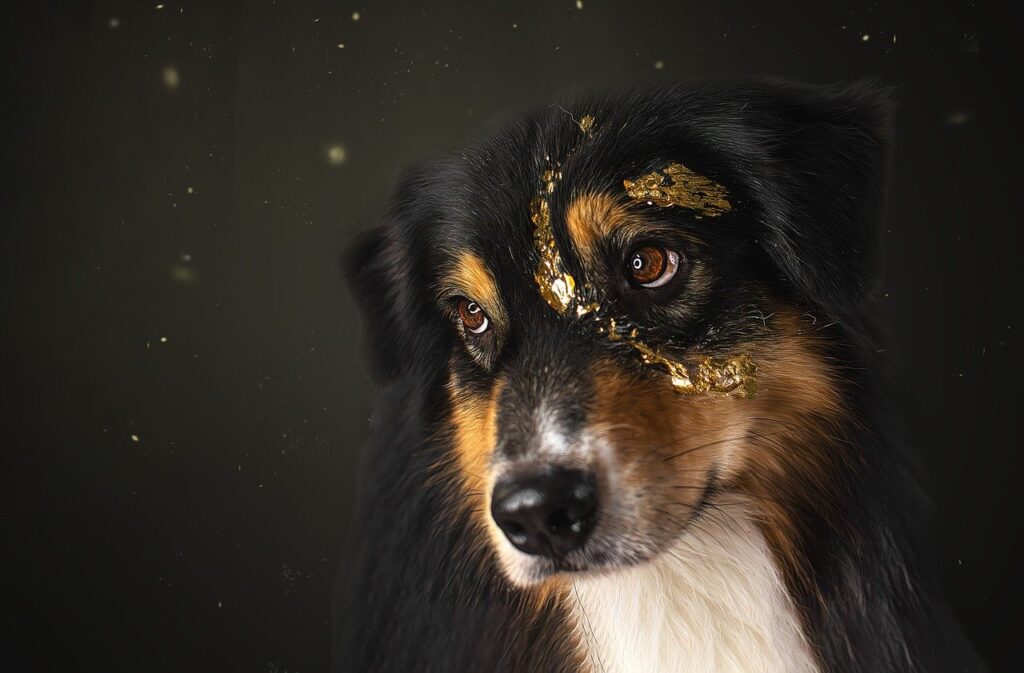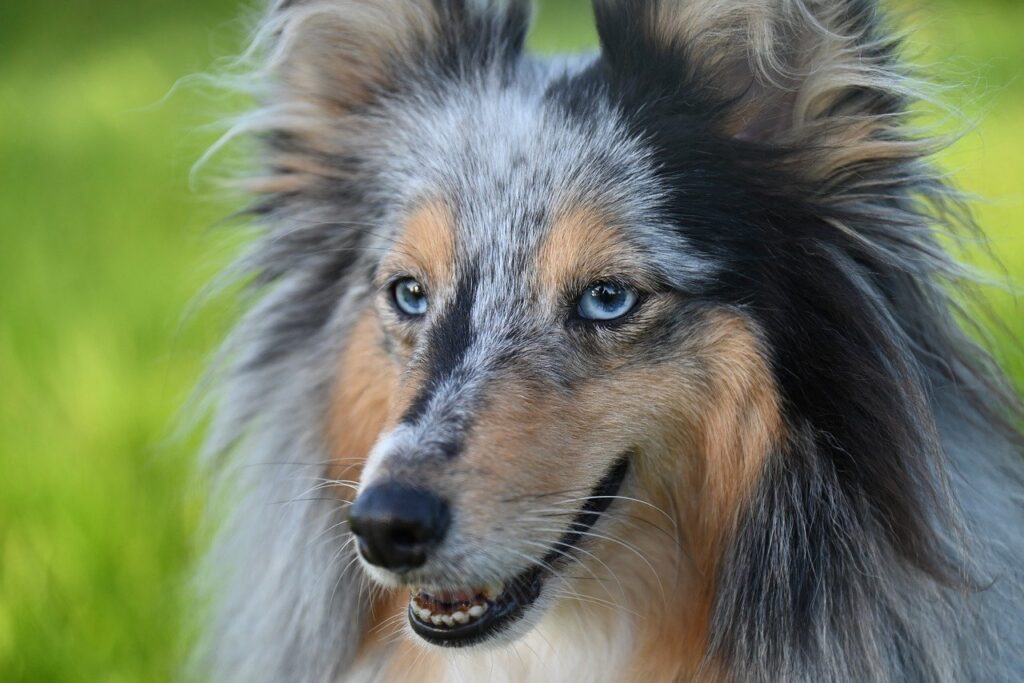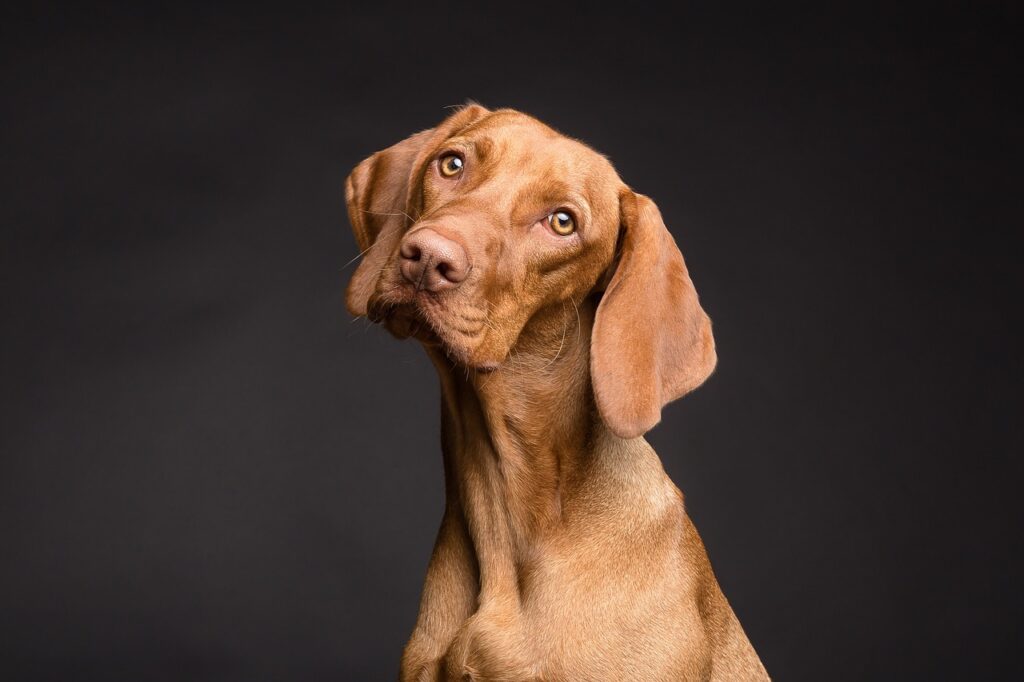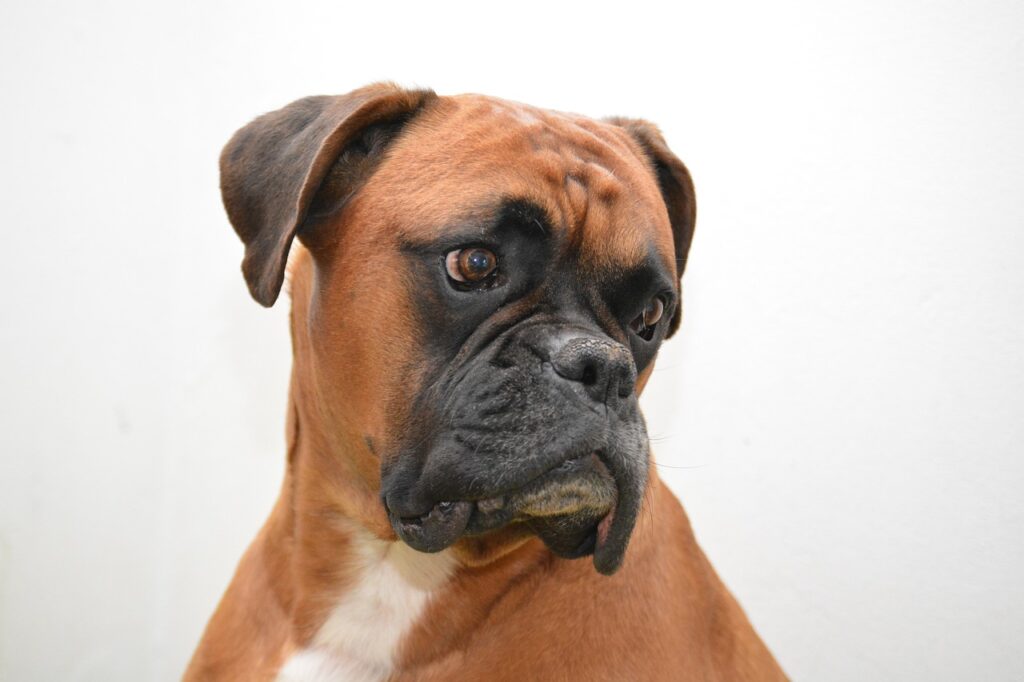Does your dog ever make a face that looks like it is coagulating milk? You are not alone. The dog side-eye, the subtle but powerful sideways glance is a common canine behaviour that leaves many owners wondering what they are thinking. In this article, we delve into the world of canine sideways glances, exploring their hidden meanings and how to decipher this silent communication to strengthen the bond between you and your four-legged friend.
We’ll explore:
- Why the side eye is a crucial communication tool for dogs. (Next section)
- How to interpret the side eye based on context and body language. (Next section)
- Ways to respond effectively to your dog’s side eye, fostering a happier and more connected relationship.
Dog Side Eye: Decoding Your Dog’s Silent Stare

Forget the wagging tail – sometimes the most telling sign of your dog’s emotions lies in a subtle shift: the side eye. This isn’t just a funny pose for memes; it’s a key form of canine communication. Just like humans, dogs use their eyes to express a wide range of feelings, and the side eye is their way of speaking volumes without a single bark.
Let’s delve deeper into this fascinating behavior and unlock the secrets behind the side eye:
- The Canine Side Eye Arsenal: An Anatomical Look – We’ll explore the physical aspects that allow dogs to deliver the perfect side eye.
- A Spectrum of Emotions: What Your Dog’s Side Eye Really Means – We’ll decode the various emotions dogs can express through this sideways glance.
- Beyond Words: Comparing Canine Body Language to Our Own – We’ll see how canine side eye compares to human nonverbal communication.
Canine Wink: Decoding the Secret Language of the Side Eye
Have you ever wondered why a dog’s side eye is so noticeable? Unlike humans, dogs have a much larger area of white around their iris, called the sclera. This expanse of white acts like a billboard for their emotions, making even the slightest shift in their gaze easy for us to pick up on. The dark contrast between the iris and sclera allows us to spot a side eye even amidst a flurry of tail wags and ear flicks.
It’s not just the head turn that grabs our attention with the side eye. When your dog delivers this look, their dark iris moves towards the corner of the eye, revealing more of that expressive white sclera. This creates a powerful visual that’s hard to miss. In essence, their eyes become a window to their emotions, one sideways glance at a time.
Understanding Your Dog’s Side Eye in Context
Observing your dog’s side eye is like deciphering a secret code. It’s more than just a glance; it’s a full-body language message that includes ear position, tail movement, and overall posture. These extra clues provide the context you need to crack the code and understand what your furry friend is trying to communicate.
By becoming a detective of doggy body language, you can decipher these silent signals and address the underlying emotions. Is your dog stressed? Playful? Maybe a little unsure? By paying attention to the situation surrounding the side eye, you can adjust your interactions accordingly and build a stronger bond with your canine companion.
Here’s how to become a whiz at deciphering your dog’s side eye:
- Reading the Whole Message: Look beyond the eye itself. Is your dog’s body relaxed, with floppy ears and a wagging tail? This likely indicates contentment or playfulness. Conversely, a tense posture, flattened ears, and a tucked tail might signal fear or anxiety.
- Considering the Context: A side eye during playtime might be a playful invitation to join in the fun. However, if it occurs during a loud noise or unfamiliar situation, it could indicate fear or apprehension.
- Understanding the Bigger Picture: By piecing together the entire picture – the side eye, body language, and surrounding context – you can unlock the true meaning behind your dog’s silent message.

Beyond the Wink: Unveiling the Emotions Behind Your Dog’s Side Eye
A dog’s side eye isn’t just a funny quirk; it’s a window into their emotional world. This subtle sideways glance can express a surprising range of feelings, from pure joy to fear and even empathy.
- Contentment’s Gaze: When paired with soft eyes and relaxed ears, the side eye can be a sign of pure contentment. Imagine your dog basking in the sun, throwing you a sideways glance – it’s their way of saying, “Life is good, isn’t it?”
- Fearful Flicker: A wide-eyed side glance accompanied by a wrinkled brow might indicate fear. This could be due to a loud noise, an unfamiliar person, or even a situation that makes them feel uncomfortable.
- Tense Stare: An intense sideways glance with bared teeth is a clear sign of aggression. This is a warning to back off and avoid further confrontation.
But the side eye isn’t just about negative emotions. Studies suggest dogs can also use it to show empathy! They might mirror your emotions with a side glance, picking up on your stress or anxiety.
It’s a silent language, each glance carrying a unique message. While barks can be loud and attention-grabbing, these subtle cues often speak volumes about your dog’s inner world. So next time your furry friend gives you the side eye, take a moment to read the body language and decipher the emotion behind it. Is it a playful wink or a sign of nervousness? Understanding these silent signals can strengthen your bond and improve your communication with your canine companion.
Deciphering the Dog Side Eye vs. Human Body Language
When it comes to expressing emotions, dogs have a secret weapon: the levator anguli oculi medialis muscle. This fancy term describes the muscle that allows dogs to raise their eyebrows, a skill absent in their wild cousins like wolves. This unique ability gives their expressions a human-like quality that we find adorable. But herein lies the potential for confusion.
As humans, we tend to project our understanding of emotions onto animals. We might interpret a dog’s side eye as “sassy” or “judgmental,” terms we use to describe human behavior. But this approach risks misinterpreting what our furry friends are trying to tell us. Just like we wouldn’t want our words twisted, it’s crucial to understand dog behavior on its own terms, not through a human lens.
Here’s why deciphering canine side eye requires a different approach:
- Limited Vocal Range: Unlike humans with a vast vocabulary, dogs rely heavily on body language. The side eye becomes a powerful tool in their communication toolbox.
- Context is Key: A side eye with relaxed ears might signal contentment, while one with bared teeth indicates aggression. Understanding the situation is vital for accurate interpretation.
- Beyond Words: Dogs may lack the ability to speak, but their side eye speaks volumes. By learning to “read” their body language, we can strengthen our bond and build a deeper connection.
Warning Signs: Decoding Discomfort Behind the Side Eye
The side eye, sometimes referred to as “whale eye” because of the visible sclera (white part) of the eye, can be a sign of stress in dogs, especially when accompanied by other body language cues. If you notice your dog giving you the side eye while stiffening their body, it’s a clear signal that they’re uncomfortable.
Here are some additional signs of discomfort or stress to watch for alongside the side eye:
- Pacing: Restless pacing back and forth is a strong indicator that your dog is anxious and can’t settle.
- Excessive Yawning: Yawning can be a sign of tiredness, but also of stress or appeasement. If your dog isn’t tired but yawning frequently, it might be a way of trying to de-escalate a tense situation.
- Drooling: Excessive drooling can be a sign of nausea or anxiety.
- Licking: Licking their lips excessively can indicate stress or anxiety in dogs.
- Dilated Pupils: Large, dilated pupils can signal fear or arousal, and can be another sign that your dog is feeling unsafe.
If you notice your dog exhibiting the side eye along with any of these behaviors, it’s important to be observant and responsive. Create a calm and comfortable environment to help alleviate their anxiety. This might involve removing them from the stressful situation, providing a safe space, or speaking to them in a soothing voice.
Recognising the signs of stress and taking steps to address them can help to ensure that your dog is safe and secure.

Reading playfulness vs. exclusivity: the nuances of the side eye
Side eyes are not always a negative portent! Sometimes, your furry friend may express playfulness or protectiveness.
Playful side eyes
- Invitation to play: your dog may be using a side-eye to invite you to join in the fun. Think of it as a playful expression that says ‘come on, let’s get the party started’.
- Strategic glances: during play, a sideways glance is a strategic move to avoid direct staring. This is their way of saying, “Hey, I’m ready to play, but let’s keep it light!” This is their way of expressing that they are ready to play.
Key point Don’t always jump to negative conclusions! Context is king.
Protective side-eye:
Sideways glances can indicate playfulness, but they can also be a protective signal. Here’s how to recognise them:
- Body language: body language: playful sideways glances are often accompanied by loose, relaxed body language and playful vocalisations such as tail wagging, purring or barking. Protective sideways glances, on the other hand, may be accompanied by tense postures, flattened ears and low growls.
- Focus of gaze: is your dog’s sideways gaze directed at you or at something else? If it is gazing at another person, animal or object, this may be a sign that it is protecting you or its territory.
Understanding the situation and observing these body language cues will help you to accurately interpret your dog’s playful and protective sideways glances.
Canine Side Eye: Decoding Your Dog’s Silent Stare
Forget the wagging tail – sometimes the most telling sign of your dog’s emotions lies in a subtle shift: the side eye. This isn’t just a funny pose for memes; it’s a key form of canine communication. Just like humans, dogs use their eyes to express a wide range of feelings, and the side eye is their way of speaking volumes without a single bark.
Let’s delve deeper into this fascinating behavior and unlock the secrets behind the side eye:
- The Canine Side Eye Arsenal: An Anatomical Look (Next section) – We’ll explore the physical aspects that allow dogs to deliver the perfect side eye.
The Canine Side Eye Arsenal: An Anatomical Look
Have you ever wondered why a dog’s side eye is so noticeable? Unlike humans, dogs have a much larger area of white around their iris, called the sclera. This expanse of white acts like a billboard for their emotions, making even the slightest shift in their gaze easy for us to pick up on. The dark contrast between the iris and sclera allows us to spot a side eye even amidst a flurry of tail wags and ear flicks.
It’s not just the head turn that grabs our attention with the side eye. When your dog delivers this look, their dark iris moves towards the corner of the eye, revealing more of that expressive white sclera. This creates a powerful visual that’s hard to miss. In essence, their eyes become a window to their emotions, one sideways glance at a time.
Decoding Dog-to- Dog Side Eye: Maintaining Peace in a Multi-Pet Household
The side eye isn’t just for humans! Dogs use this sideways glance to communicate with their furry housemates as well. While a side eye towards you might indicate something about their relationship with you, a side eye directed at another dog or cat is a form of communication between pets.
What the Side Eye Means Between Pets:
Often, this side eye signifies non-aggressive intentions, such as:
- Exhaustion: Maybe your dog has had enough playtime and wants a break. A side eye can be their way of saying, “Hey, enough wrestling for now. I need a nap!”
- Annoyance: If your feline friend keeps batting at your dog’s tail, a side eye might be a gentle way of saying, “Can you please cut it out?”
Understanding the Message is Key:
Correctly interpreting these non-verbal signals can help to maintain peaceful harmony between pets. Remember that aggression is not only a problem, but can simply be a way for dogs to set boundaries and communicate their needs to other animals.
Here’s how you can help:
- Observe the situation: Is your dog’s side eye accompanied by growling, bared teeth, or stiff posture? If so, these might be signs of true aggression and it’s important to separate the pets and provide them with space.
- Provide separate spaces: Give each pet their own designated areas to relax and feel secure.
- Supervise playtime: Keep an eye on interactions during playtime and intervene if things seem to be getting too rough or tense.
Respect and Space: The Foundations of Trust
Remember, respect and space are the cornerstones of a happy relationship with your dog.
- Respectful Distance: Don’t crowd your dog or force interaction if they seem uncomfortable. Read their body language and give them space if their posture is tense or their ears are flattened.
- Designated Safe Space: Having a safe haven, like a crate, bed, or quiet corner, allows your dog to manage stress and reduces the likelihood of anxiety-related side eye.
- Understanding the Silent Plea: The next time your dog gives you the side eye, consider it a gentle request for space. Taking a step back shows you respect their boundaries and strengthens the trust between you.
Decoding the Side-Eye: Common Triggers and How to Respond
Now that you understand how to react when your dog gives you the side-eye, let’s delve into some common situations that might elicit this look. By recognizing these triggers, you can proactively create a calmer environment for your furry friend.
Uncomfortable Handling:
- Clipping nails, baths, or grooming can trigger a side-eye if your dog finds them unpleasant.
- Solution: Gradually desensitize your dog to these procedures using positive reinforcement. Offer treats or praise throughout the process to build a positive association.
Resource Guarding:
- Sharing toys, treats, or even perceived possessions can lead to a side-eye. This “whale eye” often stems from anxiety about losing resources.
- Solution:
- Provide an abundance of toys, beds, and treats to ensure your dog feels secure.
- Use positive reinforcement training to teach them that sharing leads to good things.
- Introduce new toys or treats calmly, ensuring your dog doesn’t feel threatened.
New Arrivals:
- Introducing new people or animals can be stressful for your dog, leading to the side-eye.
- Solution:
- Make introductions gradual and controlled.
- Confine your dog initially during introductions with new people, allowing them to approach on their own terms with positive reinforcement (treats) for a good first impression.
- Apply similar principles when introducing new dogs, focusing on creating positive interactions with treats and praise.
Playtime Blues:
- During playtime, a side-eye can be a subtle way for your dog to communicate their boundaries.
- Solution:
- Read your dog’s body language: loose posture, a wagging tail with a side-eye signifies playful fun.
- Tense posture, pulled-back ears, and a tucked tail with a side-eye indicate fear or discomfort. Stop the play and offer your dog a safe space to relax.
Calming Your Canine Companion: Training Techniques to Reduce Anxiety
Does your dog seem on edge, giving you the side-eye more often than usual? Anxiety is a common concern for our furry friends, but fear not! Training can be a powerful tool to help your dog feel more secure and reduce their anxiety. This article will explore several training techniques you can use to create a calmer and happier pup.
Positive Reinforcement
Positive reinforcement is the key to unlocking a well-adjusted and confident canine. When your dog exhibits calm and composed behavior, reward them with treats, praise, or playtime. This positive association will encourage them to repeat the desired behavior, building their confidence and reducing anxiety.
Creating a Safe Haven
Provide your dog with a quiet and comfortable space to retreat to when feeling overwhelmed. This “safe haven” could be a crate, a designated corner of a room, or a specific piece of furniture. Equip it with cozy bedding, familiar toys, and anything else that brings your dog comfort. This space becomes a familiar anchor for your dog during stressful situations.
Desensitization and Counterconditioning
This technique involves gradually exposing your dog to anxiety-inducing stimuli in a controlled setting. Start at a low intensity level where your dog shows little to no anxiety. Pair the stimulus with something pleasant, like treats or praise. Gradually increase the intensity of the stimulus over time as your dog becomes more comfortable.
Examples of Positive Reinforcement Techniques
- Treat Dropping: While feeding your dog, occasionally drop treats on the floor. This teaches your dog that good things happen during mealtime, reducing mealtime anxiety.
- “Give” and “Leave It” Commands: Train your dog to give you objects they pick up and to leave desirable items alone. This can help reduce possessiveness and anxiety around resources.
Remember
- Consistency is key! Train your dog regularly using these techniques for optimal results.
- Be patient. Reducing anxiety takes time and effort. Celebrate small victories!
- Consider seeking professional help from a certified dog trainer or animal behaviorist if your dog’s anxiety is severe.
Decoding the Side-Eye: Do’s and Don’ts for Calming Your Canine
Does your dog occasionally give you a look that could curdle milk? The side-eye, a canine classic, can leave you wondering what you did wrong. Here’s the good news: it’s not about you (usually). This section will guide you on how to react appropriately when your dog gives you the side-eye, fostering a calmer and more trusting relationship.
DO:
- Stay Calm: Mirror your dog’s energy. If you get flustered, it can escalate their anxiety. Maintain a calm and reassuring presence.
- Give Space: Don’t crowd your dog. Respect their personal space and allow them to retreat to their safe haven if needed.
- Be Observant: Scan the environment for potential triggers. Is there a loud noise, an unfamiliar person, or another animal causing them discomfort?
- Gentle Removal: If the situation is causing significant distress, gently remove your dog from the stressful environment.
- Offer Support: Your dog is communicating discomfort. Offer soothing words, gentle petting (if they’re receptive), or a safe space to relax.
DON’T:
- Panic: A panicked reaction can worsen your dog’s anxiety. Stay calm and collected.
- Overreact: Scolding or punishment will only damage trust. Focus on understanding the cause of the side-eye.
- Force Interaction: Don’t try to force cuddles or play if your dog seems stressed. Give them space to self-regulate.
Decoding the Side-Eye: It’s Not Always Serious!
We’ve explored the side-eye and how to respond to it, but let’s not forget the fun side! Dogs are masters of expression, and their side-eyes can sometimes be hilarious.
The Side-Eye of Sass
Have you ever caught your dog giving you a side-eye that seems to say, “Seriously? You’re doing that again?” These moments, filled with apparent judgment or sassiness, can be incredibly funny and add a layer of humor to our relationships with our furry companions. They often end up as unforgettable moments and even land on social media!
Viral Side-Eye Stars
Remember Walter, the silver Labrador who took TikTok by storm? Sitting regally on a couch, Walter delivered a side-eye that the internet interpreted as pure disappointment. The video went viral, with viewers cracking up at Walter’s expressive look. This is just one example of how a dog’s side-eye can bring a lighter touch to our understanding of this behavior.
The Takeaway
While the side-eye can be a valuable communication tool for our dogs, it can also be a source of amusement. By understanding both the serious and humorous sides of the side-eye, we can strengthen our bond with our dogs and appreciate their full range of expression.

The Dog Side Eye: More Than Just a Look
Forget barking and tail wags, the side-eye is a dog’s true secret weapon. This seemingly simple sideways glance is a language all its own, conveying a range of emotions from playful sass to full-blown anxiety. By becoming fluent in “side-eye speak,” you can unlock a deeper understanding of your furry friend. It’s about decoding silent signals, responding with empathy, and ultimately, strengthening the incredible bond you share. So next time your dog gives you that signature look, don’t dismiss it! It might just be the key to unlocking a world of hilarious antics, heartwarming moments, and a connection that transcends words.
Dog Side-Eye FAQ
Here are some answers to frequently asked questions about the dog side-eye:
What does it mean when a dog gives a side eye?
A dog’s side-eye can have a range of meanings depending on the context and their body language. Here are some possibilities:
- Discomfort or Anxiety: This is a common reason for the side-eye. If your dog is in an unfamiliar situation, feels threatened, or dislikes something you’re doing (like clipping nails), they might give you the side-eye.
- Resource Guarding: If your dog is worried about losing a toy, treat, or even a perceived possession, they might use the side-eye as a way to communicate their anxiety.
- Playful Sass: Sometimes, a dog’s side-eye can be a bit cheeky or playful. Look for loose body language and a wagging tail to accompany this kind of side-eye.
- Unsureness: During playtime or encountering something new, a dog might use the side-eye to communicate they’re unsure about what’s happening and might need some space.
What is dog side-eye called?
There isn’t a specific technical term for the dog side-eye, but trainers sometimes refer to it as “whale eye” when it’s accompanied by the whites of the eye being visible.
Why does my dog look at me from the corner of his eye?
This is the classic side-eye! By looking at you from the corner of their eye, your dog can keep an eye on you while appearing less confrontational. It’s a way for them to communicate without feeling the need for direct eye contact, which can be perceived as a challenge in the dog world.
What is a whale eye in dogs?
The “whale eye” is a specific type of side-eye where the whites of the dog’s eye are visible, often around the whole eye or in a half-moon shape. This is a more intense signal of anxiety or discomfort than a regular side-eye and can be a warning sign that your dog might be about to act out if they feel threatened.





